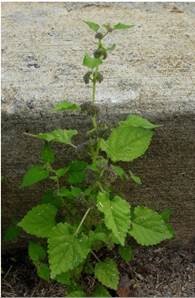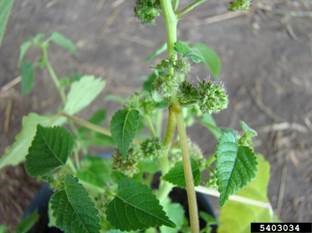Invasive Plant Alert – Fatoua villosa, Mulberryweed
This just in…
Fatoua villosa, mulberryweed, was recently reported in a subdivision in Westfield, north of Indianapolis. Before that, it was known from a plant nursery in Walkerton (St. Joseph county), and a few counties in southeast Indiana where it was growing along the Ohio River. It is known for invading nurseries and greenhouses, and it is possible that it came to the Westfield location as a hitchhiker in native plants that were purchased in Indiana and planted.
Overview (From EDDMaps.org):
Appearance
Fatoua villosa is an annual that can grow to 2.6 ft. (0.8 m) tall. Stems are branched, erect and have hooked hairs.
Foliage
Leaves are alternate, stipulate (deciduous), petiolate, 1-3.9 in. (2.5-10 cm) long, 0.4-2.8 in. (1-7 cm) wide with toothed (pointed or rounded) margins.
Flowers
Flowering occurs in the summer and fall. Flowers are light green, unisexual, apetalous and occur in axillary cymes.
Fruit
Fruit is a one-seeded achene that is less than 0.1 in. (0.8 mm) long.
Ecological Threat
Fatoua villosa is native to East Asia and occurs in wetlands and other moist, shaded areas. It is problematic in greenhouses and nurseries. The first known population in the United States was in Louisiana in 1964.
What you should do: Because it is not a particularly distinctive plant, we’re concerned that it may be more widespread than we realize. Because it can be spread through purchased plants, it would likely first establish in gardens. Please watch for this plant and report it through EDDMaps.org/Indiana or the GLEDN app if you find it.
**Make sure you do not carry seed from this plant or any other invasive to new sites – clean your boots/clothes/equipment before and after being in any natural area.**



